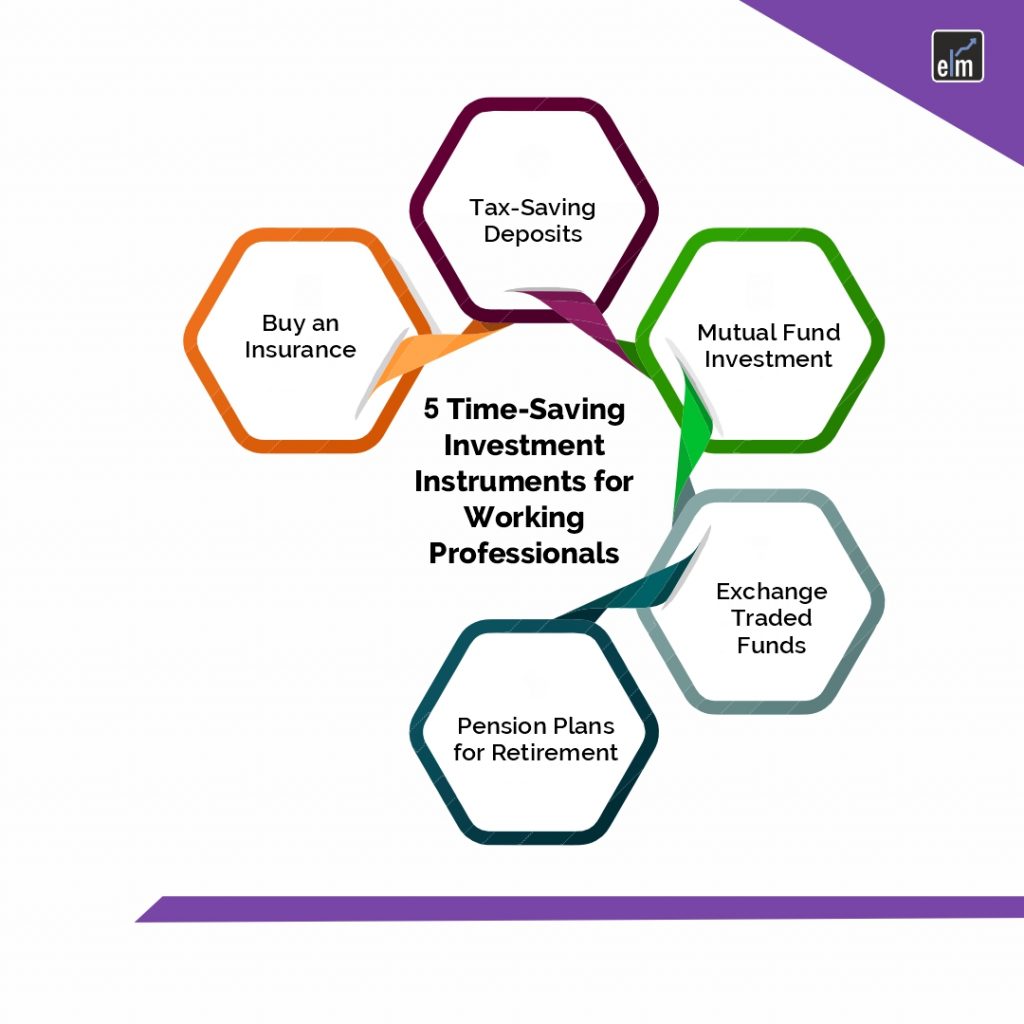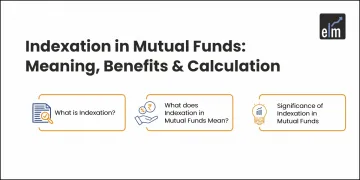For working professionals, time is a valuable resource that is frequently scarce. But effective investment management doesn’t have to take a lot of time. Professionals can efficiently increase their money without abandoning their hectic schedules by putting time-saving techniques into practice.
One can cut down on the amount of time spent on market research by making use of investment platforms and tools that provide efficient research and analytical skills. Second, think about low-maintenance, broad market exposure passive investment techniques like index funds or exchange-traded funds (ETFs).
While preserving the health of the portfolio, automating contributions and rebalancing procedures further saves time. Setting specific investment objectives and plans also aids in maintaining focus and preventing pointless diversions. And last, you can free yourself from the strain of daily investment decisions by outsourcing portfolio management to reliable financial advisors.
In today’s blog, let us discuss Time-Saving Investment Strategies for Working Professionals-
Table of Contents
Understanding the Time constraints faced by Working Professionals
Because of their rigorous work schedules, personal commitments, and obligations to their families, working professionals sometimes struggle with a variety of time limitations. These limitations could consist of:
- Work responsibilities: Professionals’ time is frequently heavily consumed by deadlines, meetings, and tasks.
- Time spent commuting: Going to and from work might take up important hours each day.
- Family obligations: Managing domestic chores, attending children’s activities, and spending time with family are important yet time-consuming duties.
- Personal development: Professionals should also make an effort to set aside time for hobbies, pastimes, and personal development.
For a number of reasons, time optimization is also essential in investment management. Here are the reasons why time optimization is also essential in investment management-
- Market dynamics: The world’s financial markets are erratic and dynamic. Making decisions quickly is crucial to seizing opportunities and reducing risks.
- Research and analysis: Extensive market, business, and economic indicator research and analysis are necessary for successful investment management. Making wise financial selections requires effectively allocating time for research.
- Portfolio monitoring: It takes time and regular attention to track portfolio performance and modify investment plans in reaction to market swings.
- Opportunity cost: Missed opportunities and reduced returns on investment might arise from time spent due to inefficient investment management.
5 Time-Saving Investment Strategies for Working Professionals
Here are time-saving investment instruments for working professionals-

1. Buy an Insurance
Even though it’s not a standard investment vehicle, financial planning requires insurance. It offers defence against unanticipated circumstances like disease, mishaps, or demise.
Purchasing insurance entails determining your coverage requirements, choosing suitable plans, and checking them on a regular basis. By preventing financial hardships brought on by unforeseen circumstances, purchasing insurance can ultimately save time.
2. Tax-Saving Deposits
Investment choices that offer tax benefits under particular provisions of the Income Tax Act include tax-saving deposits, such as the Public Provident Fund (PPF), National Savings Certificate (NSC), and tax-saving fixed deposits.
These instruments, which offer tax advantages and promote long-term savings, usually include a lock-in period.
3. Mutual Fund Investment
Mutual funds combine the capital of several investors to buy stocks, bonds, or other assets that are overseen by qualified fund managers.
Investors can select from a range of mutual fund schemes according to their time horizon, financial goals, and risk tolerance.
Mutual funds save time on individual stock research and portfolio management by providing flexibility, expert management, and diversification.
4. Exchange Traded Funds
ETFs are investment funds that trade similarly to individual stocks on stock markets.
They provide exposure to a wide range of assets and diversification across different asset classes and market segments.
ETFs provide investors with flexibility and liquidity since they are traded all day long and usually have lower fee ratios.
5. Pension Plans for Retirement
Individuals can save more for retirement with the aid of pension plans, which include employer-sponsored programs and individual retirement accounts (IRAs).
Tax deductions may be available for contributions to pension plans, and until retirement, investment gains are tax-deferred.
Automated features like target-date funds and payroll deductions are available in many pension plans, making investing easier for working people.
Simplifying Portfolio Management
Since, working professionals have limited time to do market research, they can adopt the following strategies:
Adopting a Diversified Investment Approach
To lower risk, diversification entails distributing investments throughout several industries, geographical areas, and asset types.
Investors can lessen the effects of volatility in any one investment or market sector by diversifying.
Several investment vehicles, including stocks, bonds, real estate, and alternative assets, can help accomplish diversification.
Spreading your investment exposure via exchange-traded funds (ETFs) or mutual funds is a low-effort and efficient method of achieving diversification.
Exploring Passive Investment Strategies
Passive investment strategies aim to replicate the performance of a specific market index rather than actively selecting individual investments.
Index funds and ETFs offer diversification across a wide range of securities within a single investment vehicle.
Passive strategies typically have lower fees compared to actively managed funds since they require less active management.
Investing in index funds and ETFs allows investors to participate in broader market trends without the need for continuous monitoring and decision-making.
Outsourcing Portfolio Management
Financial advisors offer tailored investment guidance according to each client’s time horizon, risk tolerance, and financial objectives.
Algorithms are used by robo-advisors to automate asset allocation and portfolio management according to preset investing strategies.
By taking care of duties like asset allocation, rebalancing, and tax optimization, financial advisors and robo-advisors can both assist investors in streamlining portfolio management.
Investors can benefit from experience and advice by outsourcing portfolio management, which also frees up time for other concerns.
Setting Clear Investment Goals and Strategies
Investors can improve their capacity to attain financial success and adjust to shifting market conditions by clearly defining their short- and long-term investment objectives, developing a cogent investment strategy in line with those goals, and routinely reviewing and modifying their investment plans as necessary.
To navigate complicated investment landscapes and maximize portfolio performance, investors must continue to be disciplined and adaptable in their approach, seeking expert help when needed.
Defining Short-Term And Long-Term Investment Objectives
Goals that can be accomplished in a few years, including building an emergency fund, buying a car, or preparing for a vacation, are examples of short-term investment objectives.
Investment objectives with a longer time horizon, such as home ownership, retirement preparation, or paying for schooling, are the emphasis of long-term investing.
Investors can more efficiently deploy resources and set appropriate investment deadlines when they have clearly defined their short- and long-term investment objectives.
Establishing A Clear Investment Strategy Aligned With Goals
An investing plan delineates the methodology that investors will employ to accomplish their financial goals.
When developing an investing plan, variables such as investment preferences, time horizon, liquidity requirements, and risk tolerance should be taken into account.
Diversification, asset allocation, and consideration of investment vehicles such stocks, bonds, real estate, and alternative assets are examples of common investment methods.
It is easier for investors to maintain concentration and discipline when their investment technique is in accordance with specified short- and long-term goals.
Regularly Reviewing And Adjusting Investment Plans As Needed
Investment performance and risk profiles are subject to alter over time due to changes in the economy, personal circumstances, and market conditions.
Investors can monitor their progress toward their objectives, analyze portfolio performance, and pinpoint any necessary adjustments by routinely examining their investment portfolios.
Rebalancing asset allocations, reallocating resources in response to shifting priorities, and taking tax consequences into account are a few examples of how investment plans might be adjusted.
Incorporating new investment opportunities, reevaluating risk tolerance, and ensuring that investment strategies stay in line with changing financial goals are all made possible by periodic reviews
Conclusion
In summary, time-saving investment techniques are critical for working professionals to maximize output and reach financial objectives. People can focus on their careers and simplify their investment operations by adopting technology, diversification, and automation. Long-term financial stability and growth are ultimately the result of effective time management in investing.
Frequently Asked Questions (FAQs)
What are some investment options suitable for working professionals with limited time?
Passive investment solutions including index funds, exchange-traded funds (ETFs), and robo-advisors are popular choices for people with little time. The time needed for management and research is minimal with these solutions.
How can I efficiently diversify my investment portfolio without spending too much time on Investing?
Investing in diversified funds, such as mutual funds or exchange-traded funds (ETFs), can provide exposure to a wide variety of asset classes and industries. Additionally, target-date funds might offer automated diversification according to your anticipated retirement date.
What are the benefits of automating my investments?
You can maintain consistency and discipline in your savings and investing goals by automating your investments. Additionally, it saves you time and effort by doing away with the requirement for regular manual intervention.
For Market Updates, Visit StockEdge






